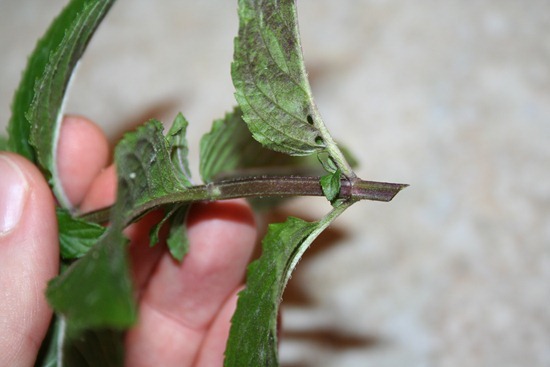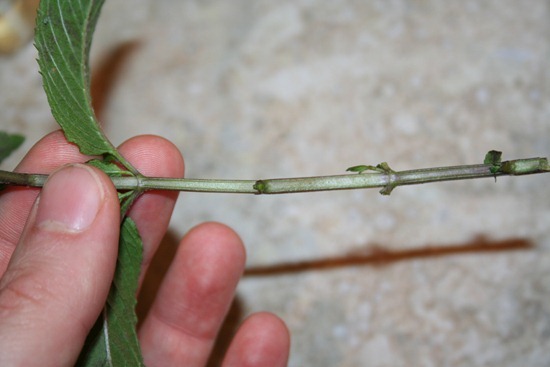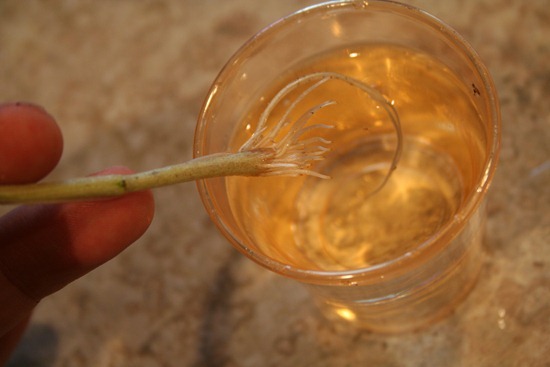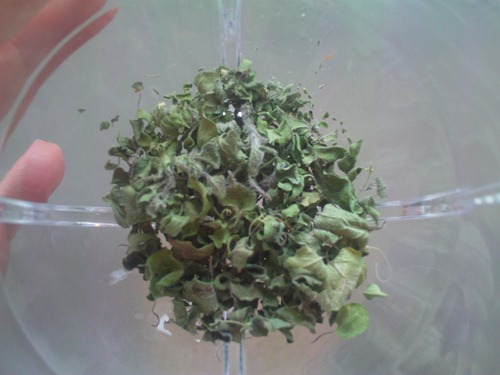Redmond farmers market
10.9 years ago basil, farmers market, fruit, herbs

Made to my favorite local farmers market here in Redmond, WA. There is a great selection of different vendors which helps keep the prices very competitive.
We left with our typical wares, kettle corn and apples, but also picked up some sugar peas in the pod, basil plant pears, and a tamale to go for my wife

My oldest daughter also convinced me to buy her a Hawaiian ice…

How to store your Fruits and vegetables
13.3 years ago corn, herbs, peas, peppers, spinach, storing, tomato, vegetables
Whether it is to preserve your harvest from your garden or to help extend the life of the expensive produce you purchased from your local grocery store or farmers market, a little knowledge can help keep your veggies tasty and even stretch out a couple of extra days before becoming compost.
The basic idea is pretty simple, think about where your produce is stored in the grocery store and then do the same thing at home. For example they store carrots in a refrigerated display case…so you should store yours in your refrigerator. They store their onions at room temperature so you would think it would be best to do the same…reality is they are best to be stored between 55-65 degrees. During the winter time my room temperature is probably in the top part of that range but majority time my indoor temperatures will be much higher. Depending on the age of your house, you may have a root cellar which helps to create these ideal conditions for that pesky produce that is too cold in the refrigerator but too warm in a heated house. For the rest of us find a nice cool location in your house such as garage or spot next to a window (at least during the wintertime) otherwise you may be reducing the quality and viability of your produce.
Below is a list of the recommended storing temperatures for fruits and vegetables:
Vegetables
FRUIT
How to make your own Stevia sweetener
Stevia is an ultra sweet sweetener that has no calories and is grown natively for ages in South America that is 300 times more sweet than other sweeteners. The good news you can grow your own in your backyard and make some in your own backyard.
1. You can start a stevia plant by seeds but you can save yourself a lot of pain and just buy one at your local nursery and root cuttings in moist soil and keep your plant around for years.
2. Once the plant is 12” to 18” tall harvest top 2/3 of the plant.
3. Place plant on dehydrator tray at 90 degrees F, checking every 8 hours until the leaves are crisp (took 18 hours for mine to get to the correct dryness.
4. Pull off the leaves off of the stem, if the end break off keep those as well (this cab be the sweetest part of the plant)
5. Grind the leaves and into a powder using a blender or coffee grinder.
One teaspoon of raw stevia powder has the equivalent sweetness of 1 cup of regular sugar and can be used as is in baked goods though to make up for the bulk you will want to also add 1/2 cup of unsweetened applesauce.
You can also make your own liquid sweetener by adding 1 tablespoon of raw stevia to 1 cup water and boil for 10 minutes. Filter leaves out using a coffee filter and keep in the refrigerator for and add to your liquid drinks as needed.
How to make dried basil
13.8 years ago basil, dehydrator, herbs
Summer has finally appeared here in the Pacific Northwest with temperatures in the 90s I decided this would be a good time to dry some herbs in the garage given it was already at the right drying temperature without any heating required.
Here is the basic steps to harvest, dry, and store your own dried basil.
- 1. Pick and clean (optional) the leaves
- Start by trimming as much as you may need for the next month. If the leaves are dirty give them a quick rinse and pat them dry with a paper towel. If the leaves are clean you can skip this step. You want to pick the greenest leaves you can find. In my case many of the leaves were not as green as I would have likes (they are getting better now the weather is improving)
- 2. Strip the leaves from the stem
- Unlike oregano this part if very easy use scissors (or just pinch off with your finger nails.
- 3. Dry the leaves
- If you have a food dehydrator place the leaves in a single layer and set to 90-100 degree F for about 24 hours. Alternately you can also dry the leaves by placing them in a screen in a dry warm place. You will know they are down when the leaves are crispy and can be pulverized easily with your fingers.
- 4. Storing the leaves
- Now you have two choices:
- 1. Keep the leaves whole and chop them as you need them for added flavor
- 2. Chop them up using a spice/coffee grinder (or Magic Bullet
with the grinding blade) and use them immediately as needed
As you can see the freshly dried basil (left) looks much better than the stuff hanging around in my spice rack, which was only a few months old.
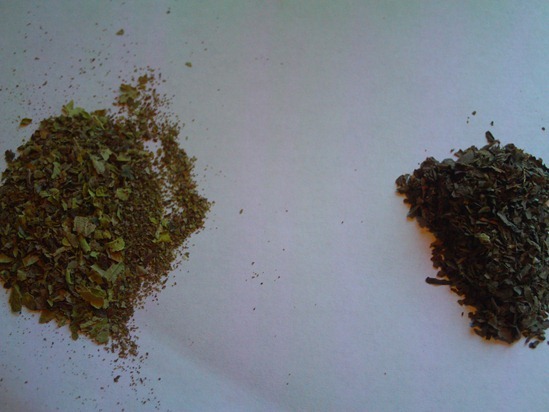
The picture above had two purposes, I actually place my herbs on paper then fold to easily pour into the old bottles.
Tags: herb garden, herbs
How to clone your own herbs in your garden
Cloning herbs is an inexpensive and fast way to expand your herb garden. This is also a great method to possible give or receive (with permission of course) from friends/neighbors.
Unlike cloning other organisms, plants have a much simpler procedure you can do in your kitchen.
1. Take cutting from mother plant. Cut a stem of total length of about 4-5 inches, cutting 1/2 inch above a leaf node. The leaf node is where the leaves attach to the stem. You want to make this cut at 45 degrees with a sharp knife/razor blade/shears.
2. Remove 2-3 sets of leaves. You want the plant to concentrate of growing roots rather than leaves so you need to trim off the sets of leaves that will be in water/rooting medium.
3. Start rooting process. You can apply a rooting hormone if you wish but I have had great results without needing to do this. Depending on the type of herbs you need to place your cutting in simply a container filled with water or some sort of rooting medium (Coir/Perlite/Coarse Sand/Rooter Plugs)
Herbs to start in water:
Basil, Thyme, Mint, Oregano
Herbs to start in Rooting Medium:
Lavender, Lemon Verbena, Lemon Balm, Rosemary, Sage, Santolina, Savory, Scented Geraniums, Stevia
Water Only Care. With the water only option you should change the water every couple days and ensure that the roots are always under water. You should see roots in a week to a week and a half. After the roots are well established you can then plant outdoors or to a 4 inch pot.
Rooting Medium Care. You will need to water the plants daily to ensure there is adequate moisture. After a couple weeks you should see that the cutting has a well established root system and can be transplanted to pot or outdoors.
Other ideas
I use this technique to save some money by purchasing a single plant at the my local garden center and then cloning to fill the space to get the harvest I am looking for. One other idea is to plant fresh herbs purchased from the grocery store, success may vary but should be fun to try…
This is also a great technique to extend your fresh basil throughout the winter. At the end of your outdoor season take a couple cuttings and place in water indoors. Use the fresh basil and when the plant appears to weaken take another cutting and repeat the process. Fresh basil all winter and a good basil plant ready for next spring.
Tags: herb garden, herbs
How to make dried oregano
This winter I went through my spice rack (which was given as a wedding gift 11 years ago) and threw out any spices I have yet to open and took inventory of spices I have at least used half of the container. These herbs were added to my growing list which one of which was oregano.
Here is the basic steps to harvest, dry, and store your own oregano:
- 1. Pick and clean (optional) the leaves
- Start by trimming as much as you may need for the next month. If the leaves are dirty give them a quick rinse and pat them dry with a paper towel. If the leaves are clean you can skip this step.
- 2. Strip the leaves from the stem
- You can try to save some time and plan on doing this after you dry but the stems will be come very brittle and will lead to a lot of tiny stem picking later. The easiest way to do this is to run your finger down the plant from the end of the stem toward the beginning that should get the leaves off pretty easily and quickly.
- 3. Dry the leaves
- If you have a food dehydrator place the leaves in a single layer and set to 90-100 degree F for about 24 hours. Alternately you can also dry the leaves by placing them in a screen in a dry warm place. You will know they are down when the leaves are crispy and can be pulverized easily with your fingers.
- 4. Storing the leaves
- Now you have two choices:
- 1. Keep the leaves whole and chop them as you need them for added flavor
- 2. Chop them up using a spice/coffee grinder and use them immediately as needed
As you can see the freshly dried oregano (left) looks much better than the stuff hanging around in my spice rack. Can’t tell from the picture but also smells much better too.
Tags: cheap, herb garden, oregano
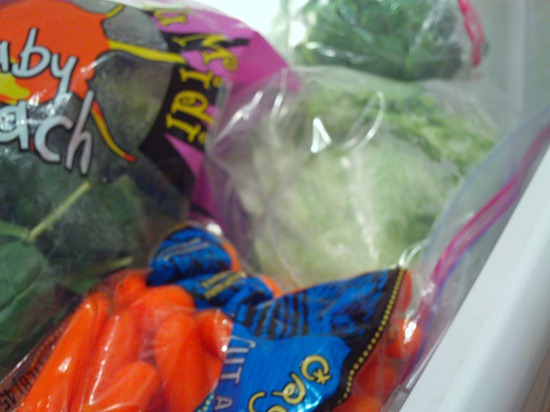
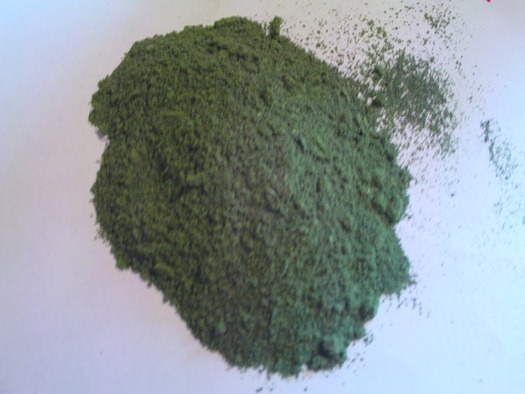
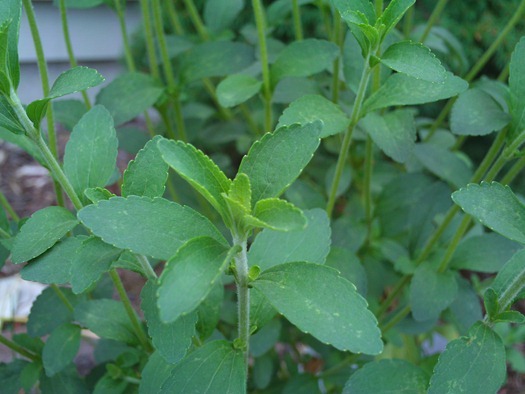
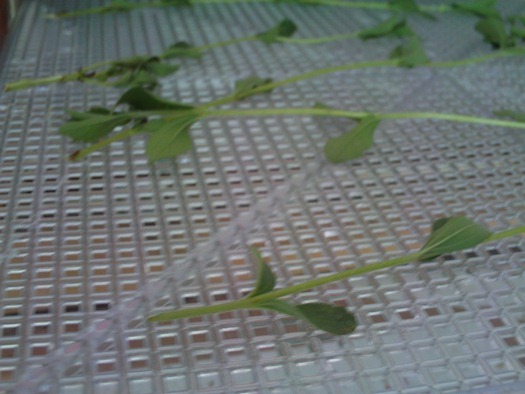
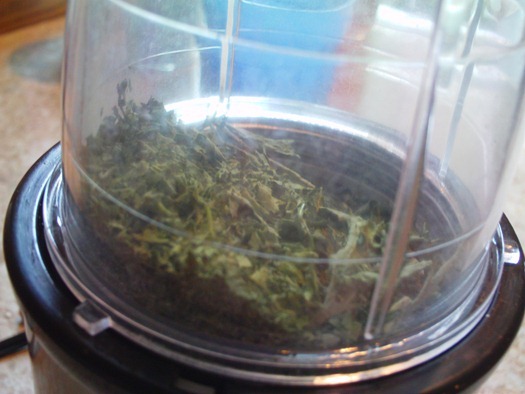
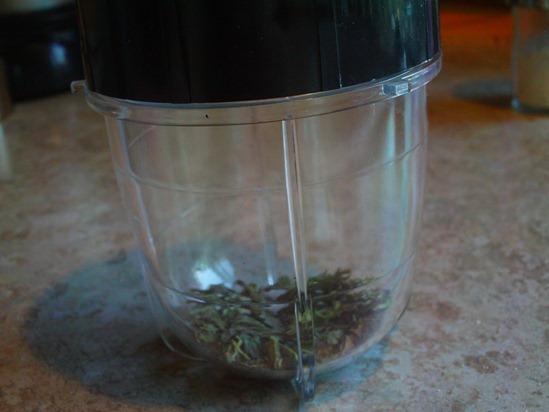
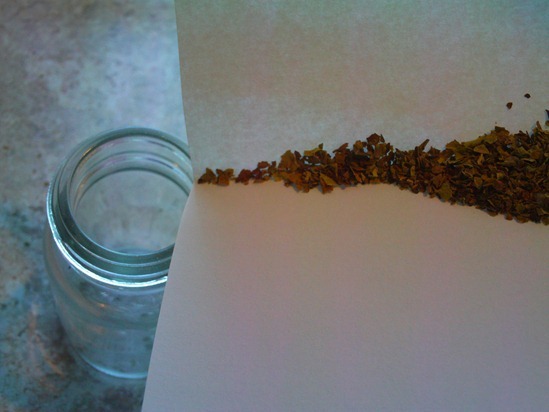
![003[1] 003[1]](http://www.cheapvegetablegardener.com/wp-content/uploads/2010/07/0031_thumb.jpg)
![032[6] 032[6]](http://www.cheapvegetablegardener.com/wp-content/uploads/2010/07/0326_thumb1.jpg)
